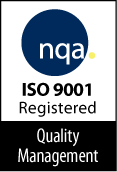Anatomical Therapeutic Chemical (ATC) classification system is maintained by the WHO Collaborating Centre for Drug Statistics Methodology in Oslo, Norway. The system provides a global standard for classifying medical substances and serves as a tool for drug utilization research. The ATC chemical classification began with drug consumption research in the 1960’s.
ATC Timeline:
• 1968- Engel and Siders published “The consumption of drugs,” a study from 1966-1967
• 1969- A symposium in Oslo on “The consumption of drugs” was organized by the WHO Regional Office for Europe
• 1976- First use- Nordic Council on Medicines collaborated with Norwegian researchers to publish the ATC methodology for the first time
• 1981- WHO Regional Office for Europe recommends ATC for international drug utilization studies
• 1982- WHO established the Collaborating Centre for Drug Statistics Methodology in Oslo
• 1996- WHO recognized the need to promote the adoption of the ATC methodology
• 1996- WHO brought management of ATC under their headquarters in Geneva
The ATC System divides drugs into different groups according to the organ or system on which they act and/or their therapeutic and chemical characteristics which include:
A – Alimentary tract and metabolism
B – Blood and blood forming organs
C – Cardiovascular system
D – Dermatologicals
G – Genito urinary system and sex hormones
H – Systemic hormonal preparations
J – Antiinfectives for systemic use
L – Antineoplastic and immunomodulating agents
M – Musculo-skeletal system
N – Nervous system
P – Antiparasitic products, insecticides and repellents
R – Respiratory system
S – Sensory organs
V – Various
Each lower-level ATC code stands for a pharmaceutically used substance, or a combination of substances, in a single indication (or use). Example A, first level, main anatomical group is alimentary tract and metabolism. A10, second level, main therapeutic group is medicines used in diabetes. A10B, third level, therapeutic/pharmacological subgroup is blood-glucose-lowering medicines and A10BB, fourth level, chemical/therap/pharmacol subgroup is Sulfonamides, urea derivatives. The last is A10BB01, fifth level; subgroup for chemical substance is Glibenclamide.
There are two major ATC coding guideline principles: Each drug or compound should resolve to a unique, single code for indication and route of administration and lower level codes will only be applied if necessary. If a drug is already uniquely identified at the 3rd level, the 4th and 5th levels are not required. The main purpose of ATC is for presenting drug utilization statistics, primarily for improving drug use and it may also be used for estimates of frequency trends in spontaneously reported drug safety cases of suspected adverse events. You may screen for double medication where use of identical drugs or two chemically different substances with similar pharmacodynamics properties. ATC Codes are used to create drug catalogs (e.g. Martindale, WHO Essential drug list). WHO states ATC Classification should not be used for pricing, reimbursement or pharmaceutical marketing purposes. ATC coding is used by WHO CC and various agencies to track the incidence of adverse events associated with a drug’s utilization and ATC classification of a drug can be leveraged by a manufacturer to seek to re-brand a drug combination by citing newly acquired value differentiators. Different ATC codes can be assigned to the same active ingredient if it is combined with another active ingredient. This can help extend the life of an older product. A company can utilize these WHO ATC coding conventions to help add new life to an aging product. Drugs can have more than one indication. An example of this includes cancer drugs like vastin or chemotherapeutics or corticosteroids. When out-licensing such compounds in development, the licensor (biotech) is likely to point at the potential of the drug in several indications. This also means that a drug may have more than one ATC code. For example, Acetylsalicylic acid (aspirin) has A01AD05 (WHO) as a drug for local oral treatment, B01AC06 (WHO) as a platelet inhibitor, and N02BA01 (WHO) as an analgesic and antipyretic. On the other hand, several different brands share the same code if they have the same active substance and indications. When coding in ATC, we find three different types of coding scenarios. Simple Codes, which are drugs or compounds that act on one system, are only for one indication and have a single route of administration. Multiple indications, drugs or compounds with multiple indications, result in a single drug having multiple ATC codes applied based on either indication or route of administration. Also included are multiple codes for diseases where there are multiple drugs used to treat different systems, resulting in multiple codes for the same indication.

